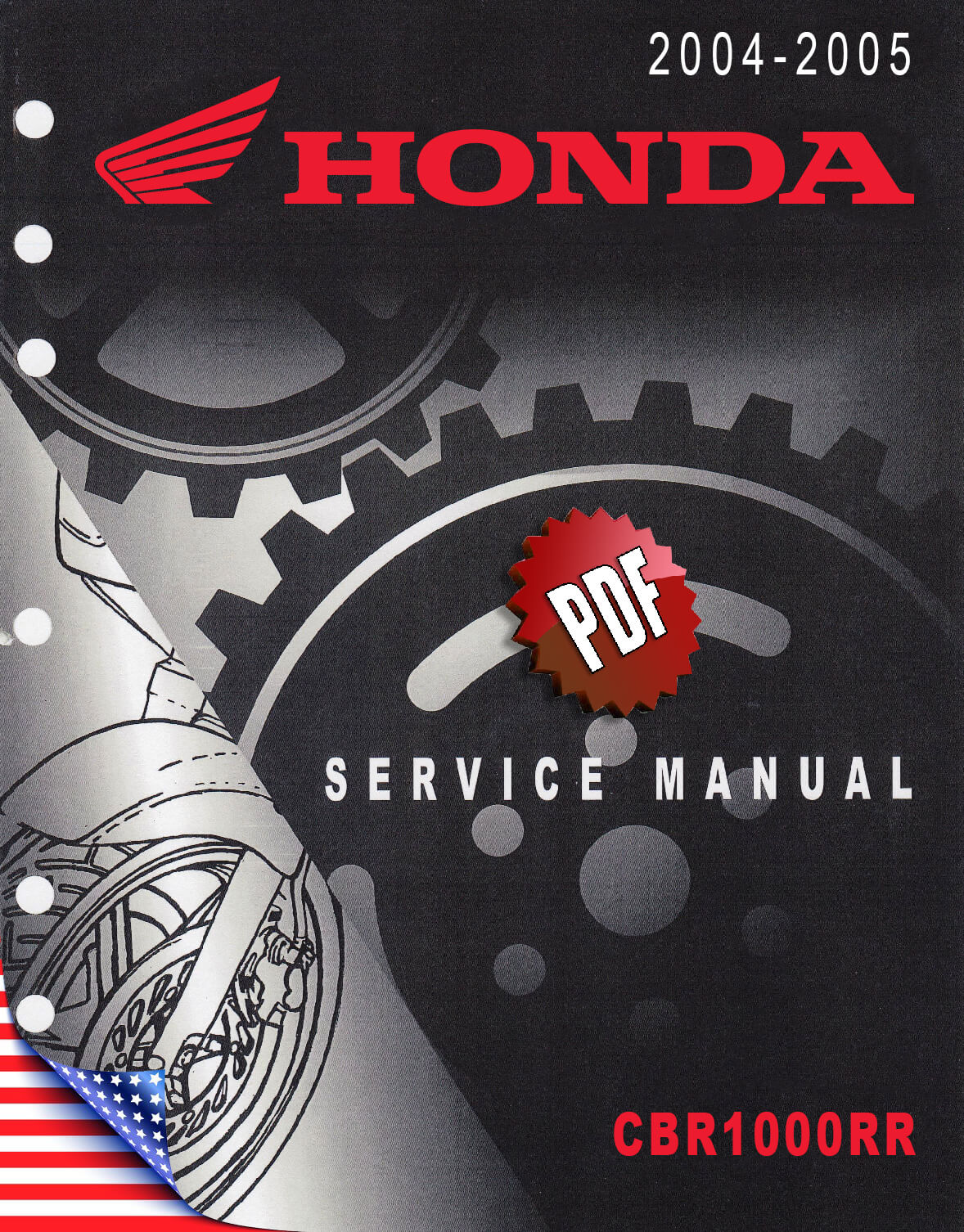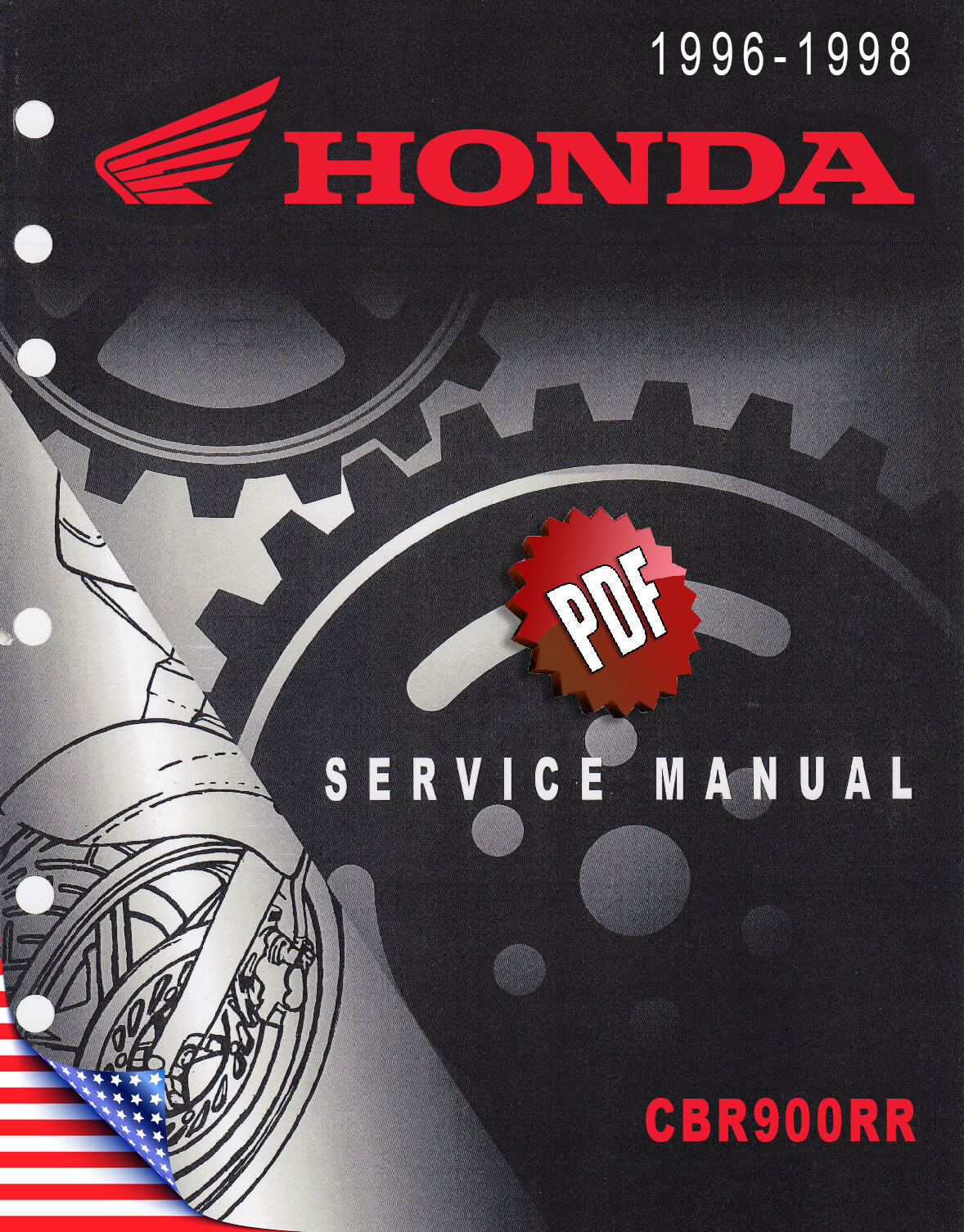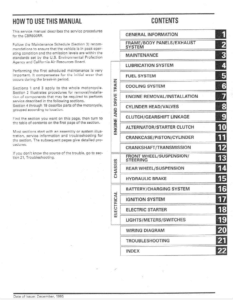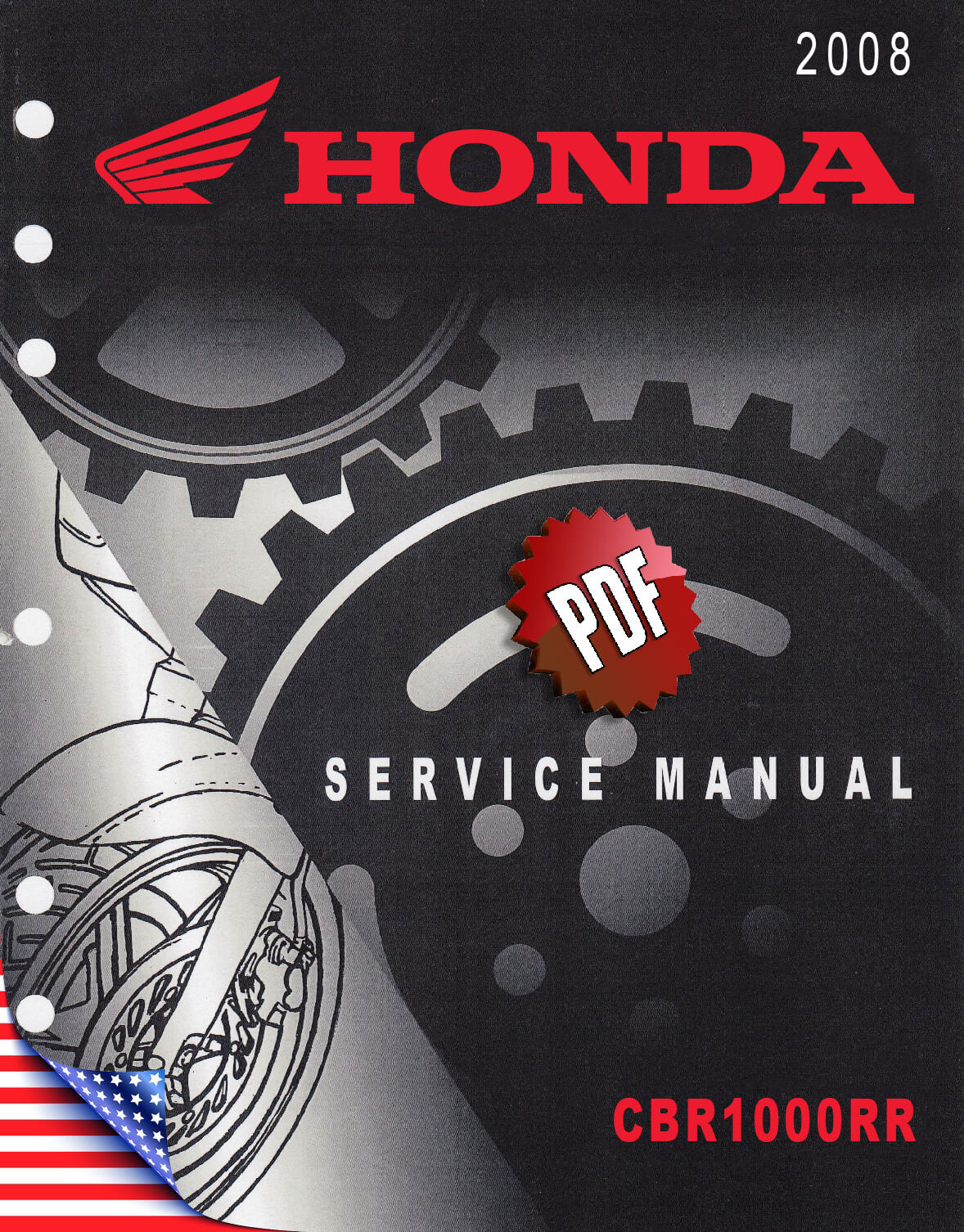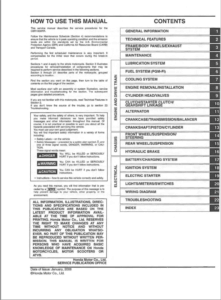Complete PDF version of the Service Manual for the Honda CBR1000RR 7th gen. A MUST for every Fireblade owner.
Download: Immediately after payment!
OEM Original factory workshop manual.
Models covered by this manual: 2004-2005
Number of pages: 586 pages
Table of contents:
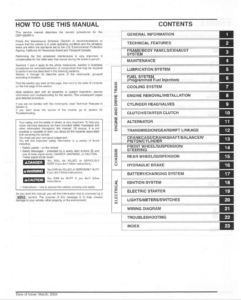
This PDF repair manual can be downloaded right after the payment process in complete, on the device of your choice. You will also receive the download link by email along with your receipt.
We do not offer printed manuals, for the following reasons:
- it is more eco-friendly to use a digital version
- your manual never gets dirty or greasy
- you can always choose to print the specific page(s) you need to work on your bike
- you receive your manual immediately after payment
- it is searchable

Honda CBR1000RR
The Honda CBR1000RR is a 999 cc (61.0 cu in) liquid-cooled inline four-cylinder superbike (also known as FireBlade) released by Honda in 2003 as the 7th iteration of the CBR series of motorbikes that began with the CBR900RR in 1990.
The Honda CBR1000RR was created by the same team that was responsible for the MotoGP series. Many of the innovative technology featured in the Honda CBR600RR, a direct descendent of the RC211V, were carried over to the new CBR1000RR, including a longer swingarm, Unit Pro-Link rear suspension, and Dual Stage Fuel Injection System (DSFI).
2004–2005
The Honda CBR1000RR (SC57) was the seventh-generation RR (SC57) and the successor to the 2002 CBR954RR. Few elements from the CBR954RR design were carried over to the CBR1000RR. The tiny 998 cc (60.9 cu in) in-line four was a new design with differing bore and stroke dimensions, a race-inspired cassette-type six-speed gearbox, an all-new ECU-controlled ram-air system, dual-stage fuel injection, and a new computer-controlled butterfly valve. The chassis was also completely redesigned, with an organic-style aluminum frame made up of Gravity Die-Cast main sections and Fine Die-Cast steering head structure, inverted fork, Unit Pro-Link rear suspension, radial-mounted front brakes, and a centrally located fuel tank hidden behind a faux cover. In addition, the Honda Electronic Steering Damper (HESD) debuted as an industry first device, with the goal of improving stability and reducing head shaking while automatically correcting for high and low speed steering effort.
A larger swingarm worked as a longer lever arm in the rear suspension, resulting in better traction and more progressive suspension action. The CBR1000RR’s swingarm was 34 mm (1.3 in) longer than the similar portion on the CBR954RR (585 mm (23.0 in) compared to 551 mm (21.7 in)) and made up 41.6 percent of its overall wheelbase. The wheelbase of the CBR1000RR was also enlarged, measuring 1,405 mm (55.3 in), a 5 mm (0.20 in) increase over the 954.
Another reason the CBR1000RR engine had nothing in common with the 954 was to accommodate the larger swingarm. Shortening the engine in comparison to the 954 entailed abandoning the traditional in-line arrangement. Engineers instead triangulated the CBR1000RR’s crankshaft, main shaft, and countershaft, with the countershaft set below the main shaft, substantially reducing the engine front to rear and placing the swingarm pivot closer to the crankshaft. Yamaha successfully launched this concept with the YZF-R1 model in 1998, and it inspired superbike design in the years that followed.
Positioning this tiny engine further front in the chassis enhanced front-end weight bias, which is an efficient way of making high-powered liter motorcycles less prone to wheelies under strong acceleration. This method, however, left very little room between the engine and the front wheel for a huge radiator. Engineers remedied this issue by giving the RR a modest 28° cylinder inclination and shifting the oil filter from the front of the 954 engine to the right side of the 1000RR engine. The RR’s center-up exhaust system was able to tuck in close to the engine as a result.
Source: Wikipedia

